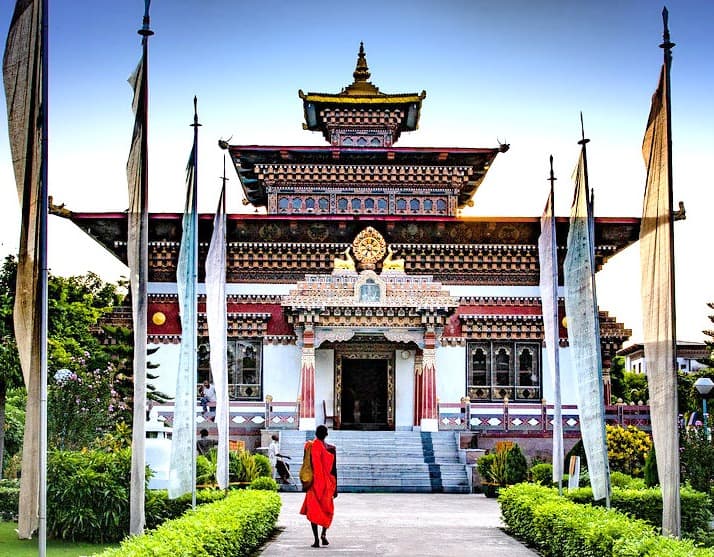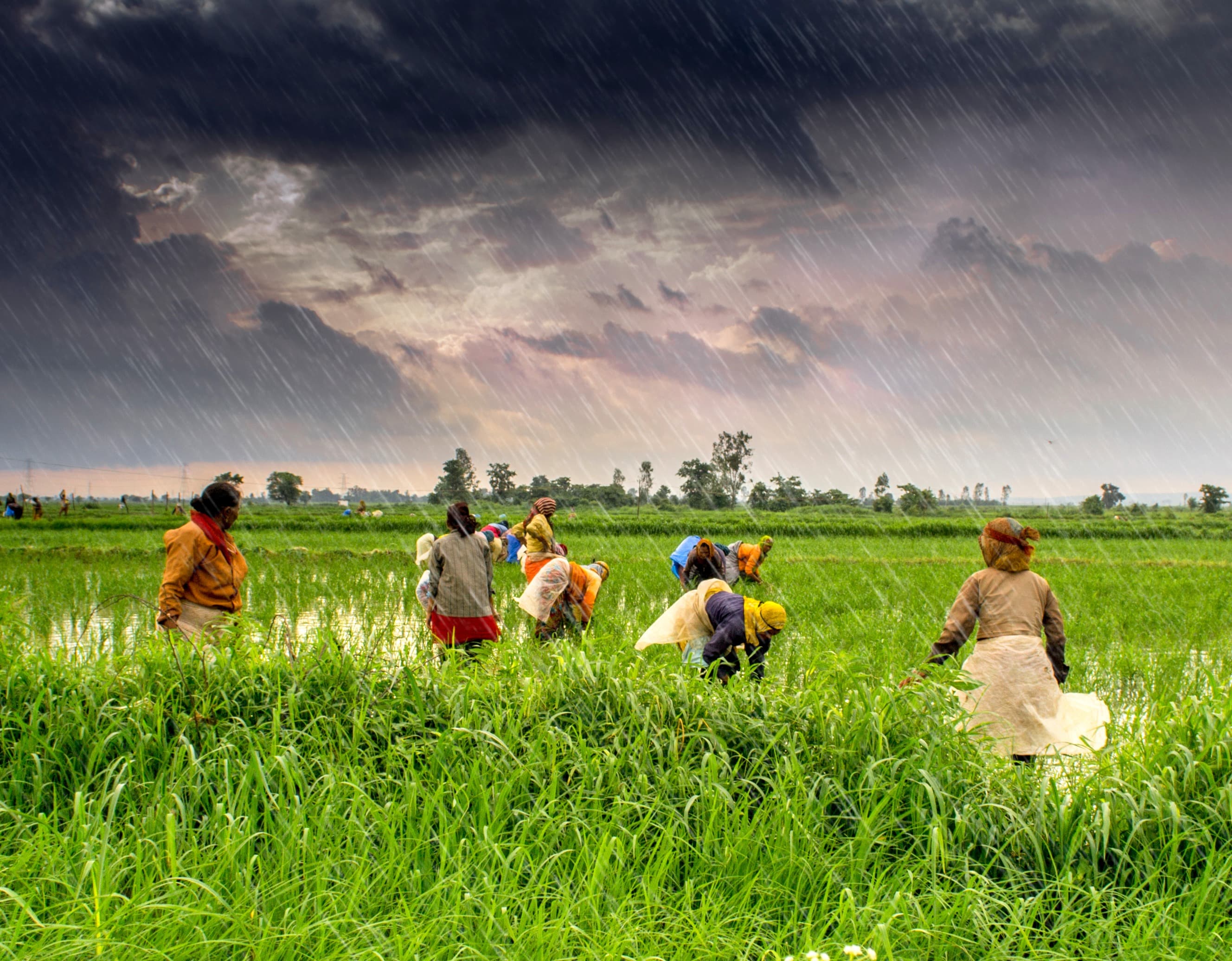- Losar (Tibetan New Year)
- Saga Dawa Festival
- Monlam Prayer Festival
- Shoton Festival (Yogurt Festival)
- Bathing Festival
- Horse Racing and Archery Festivals
- Butter Lamp Festival
- Things to consider during the Festival Celebration in Tibet
- FAQs of the Tibetan Festivals: A Window into the Region's Vibrant Cultural
Tibetan festivals serve as a vibrant showcase of the region's rich cultural heritage, deeply intertwined with Buddhist spirituality, community values, and ancient traditions. Celebrations such as Losar (Tibetan New Year), Saga Dawa, Monlam Prayer Festival, and the Shoton Festival highlight a unique blend of religious ceremonies, traditional music, dance, and a communal sense of joy and renewal. These festivals not only provide a window into the daily lives and spiritual practices of the Tibetan people but also play a crucial role in preserving the unique identity and heritage of Tibet. Through the communal spirit of these events, Tibetans continue to celebrate and pass down their cherished traditions, making these festivals a key component of the region's cultural landscape.

At Druk Holidays, we specialize in offering unforgettable experiences of Tibetan festivals, showcasing the vibrant cultural heritage of the region. Our carefully curated tours provide an up-close and personal look at the rich traditions, spiritual ceremonies, and community celebrations that define Tibet. With a focus on authenticity, sustainability, and cultural immersion, we ensure that every traveler gains a deep understanding and appreciation of the unique festivities that Tibet has to offer. Whether it's witnessing the grandeur of Losar, the Tibetan New Year, or participating in the sacred Saga Dawa Festival, Druk Holidays is your gateway to the heart of Tibetan culture.
Losar (Tibetan New Year)
Losar, the Tibetan New Year, is the most significant and joyous festival in Tibet, marking the beginning of a new lunar year. It is a celebration that embodies the richness of Tibetan cultural traditions, spiritual practices, and community spirit. Losar festivities, which can last up to 15 days, with the first three days being the most important, blend ancient rituals, social gatherings, and a profound sense of renewal and purification.
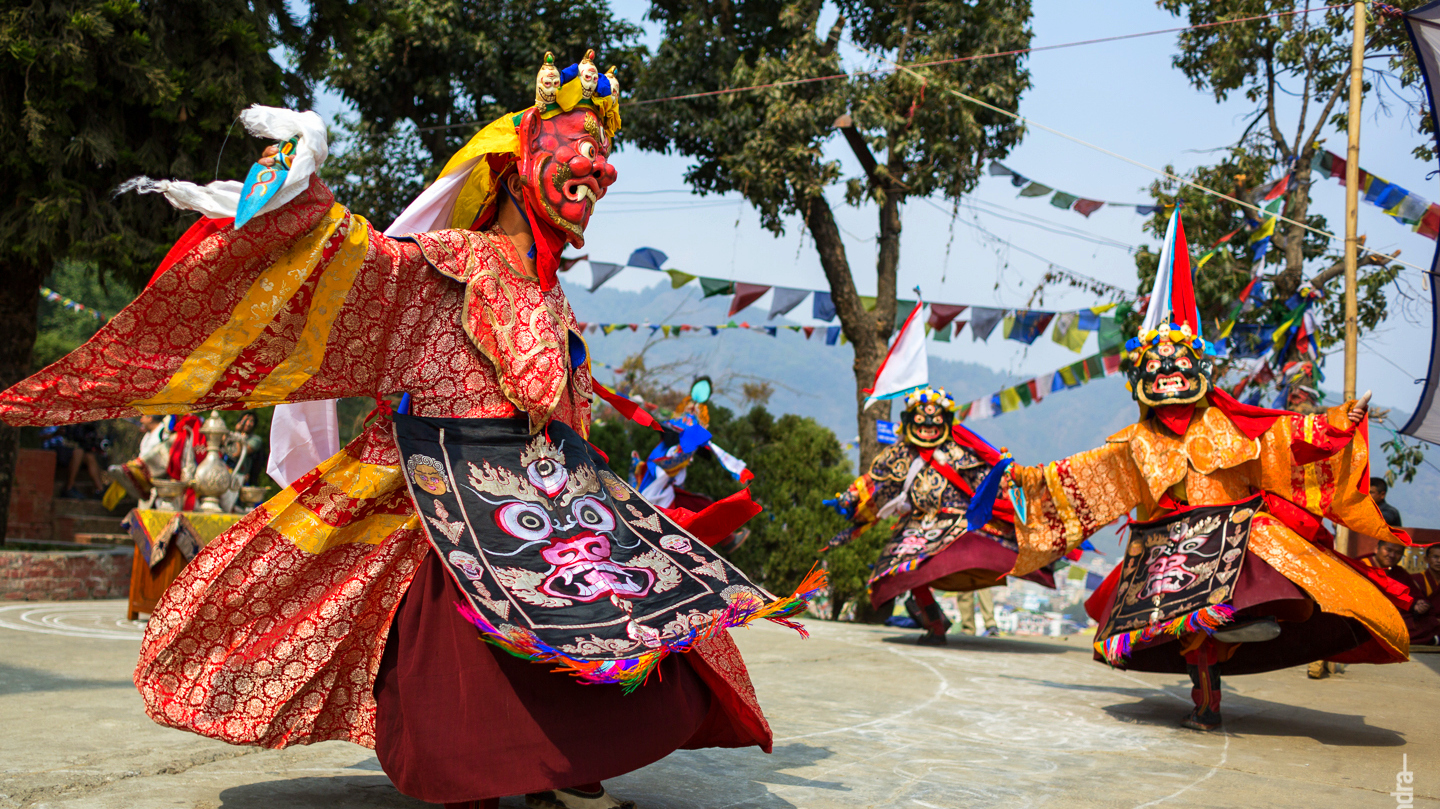
Origins and Significance: The origins of Losar date back to the pre-Buddhist period in Tibet when it was a winter incense-burning custom. It evolved into the current New Year celebration after the introduction of Buddhism in Tibet. Losar is not just a time for festive joy but also a period for honoring deities and ancestors, as well as for engaging in rituals that aim to dispel the negativities of the past year and welcome the coming year with a clean slate.
Celebrations and Customs: Losar preparations begin several days before the actual New Year's Day. Tibetan families thoroughly clean their homes to rid them of any bad luck from the previous year and to welcome positive energies. Decorations, often featuring auspicious symbols, are put up, and special offerings are made on family altars. Chema is one of the unique features of Losar, where a special type of offering called "Lama Losar" is prepared. It consists of a sheep's head (real or made from dough) and colored butter to symbolize prosperity and auspiciousness. Families also prepare and enjoy khapse, a variety of fried pastries, and chang, a traditional barley beer, as part of the celebrations. On New Year's Eve, the Gutor ritual takes place, involving the preparation of a special soup called guthuk, made from nine different ingredients. It includes dumplings that contain symbolic objects predicting the fortune of the diner in the coming year. This is also a time for monks to perform rituals to expel evil spirits. The first day of Losar is dedicated to family, with members exchanging greetings and well-wishes. The second day, known as King's Losar (Gyalpo Losar), focuses on honoring community and national leaders. Ceremonies and rituals are performed to invoke blessings for the Dalai Lama and other leaders.
Social and Cultural Significance: Losar is a time for reconciliation, where people settle old debts and disputes, symbolizing a fresh start. It's also an occasion for families and communities to come together, reinforcing social bonds and cultural identity. Traditional songs, dances, and games are integral parts of the celebrations, along with visits to monasteries for prayers and blessings.
Losar encapsulates the essence of Tibetan culture, spirituality, and community values. It's a vibrant testament to the resilience and richness of Tibetan traditions, offering a profound message of peace, renewal, and hope for the future. Celebrating Losar provides a unique insight into the heart of Tibetan life, reflecting its deep spiritual roots and the enduring strength of its cultural heritage.
Saga Dawa Festival
The Saga Dawa Festival is one of the most important spiritual celebrations in Tibet, marking the triple anniversary of Buddha Sakyamuni's birth, enlightenment, and nirvana (passing away). Observed on the 15th day of the fourth month in the Tibetan lunar calendar, which typically falls in May or June according to the Gregorian calendar, Saga Dawa is a time of prayer, reflection, and acts of merit.
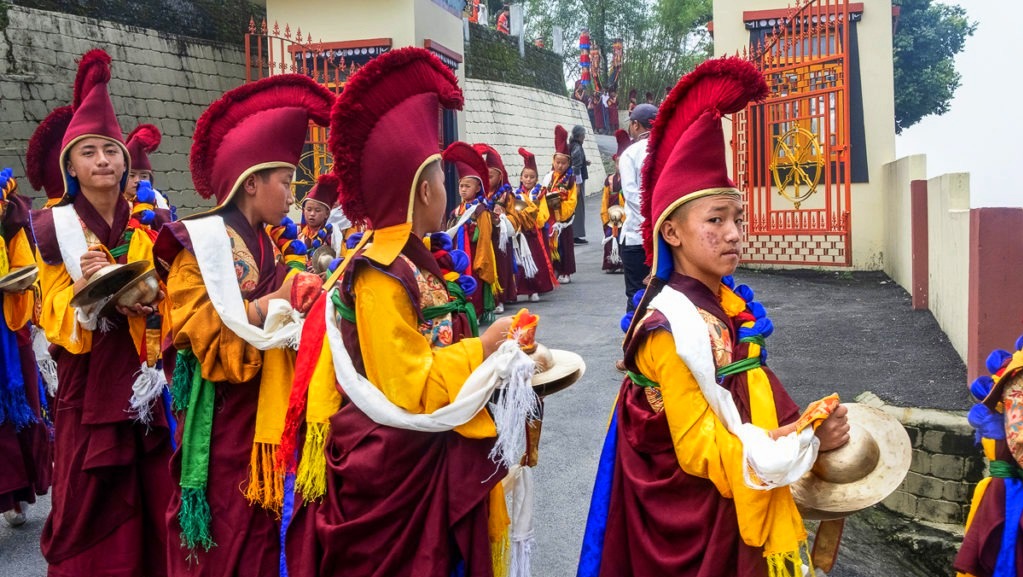
Significance: The festival is deeply significant in Mahayana Buddhism, as it honors the life and teachings of Buddha. The name 'Saga Dawa' literally translates to "the fourth month" in Tibetan, referring to the lunar month during which these key events in Buddha's life are commemorated. It is believed that positive actions and merits gained during this period multiply in their effects, making it a favorable time for spiritual growth and altruistic deeds.
Celebrations: During Saga Dawa, Tibetans engage in various religious and charitable activities. These include circumambulating sacred sites like temples, stupas, and monasteries; reading and reflecting on Buddhist scriptures; and freeing captive animals to save lives, reflecting the Buddhist precept of compassion for all beings. One of the festival's most visible marks is the hanging of prayer flags, which are believed to spread spiritual messages and blessings with the wind.
Mount Kailash Pilgrimage: A significant highlight of Saga Dawa is the pilgrimage to Mount Kailash, considered by many as the most sacred mountain in Asia. Pilgrims undertake a challenging trek around the mountain, a ritual known as a kora, to show reverence and seek spiritual purification. This journey is particularly auspicious during Saga Dawa, attracting thousands of pilgrims from Tibet, Nepal, India, and other parts of the world.
Meritorious Acts: The festival is also characterized by acts of generosity such as giving alms to the needy, donating to monasteries, and providing food to animals. Vegetarianism is commonly observed during this period as a gesture of non-violence and respect for all life forms.
Environmental Awareness: In recent years, Saga Dawa has also become an occasion for promoting environmental awareness among the Tibetan community. Many use the festival as an opportunity to clean up local areas, plant trees, and engage in conservation efforts, linking spiritual practice with ecological stewardship.
Cultural Impact: The Saga Dawa Festival not only embodies the spiritual heart of Tibetan Buddhism but also strengthens community bonds and cultural identity. It serves as a vivid reminder of the profound teachings of Buddha and the path towards enlightenment, compassion, and peace.
Celebrated with deep devotion and reverence across the Tibetan plateau and in Himalayan regions, the Saga Dawa Festival is a profound expression of Buddhist faith, offering a time for reflection, renewal, and the deepening of spiritual practice.
Monlam Prayer Festival
The Monlam Prayer Festival, also known as the Great Prayer Festival, is one of the most significant and grand religious events in Tibetan Buddhism. It was established by Tsongkhapa, the founder of the Gelugpa school, in 1409. The festival is celebrated for several days following Losar, the Tibetan New Year, with its main events traditionally culminating on the 15th day of the first lunar month, marking the full moon.
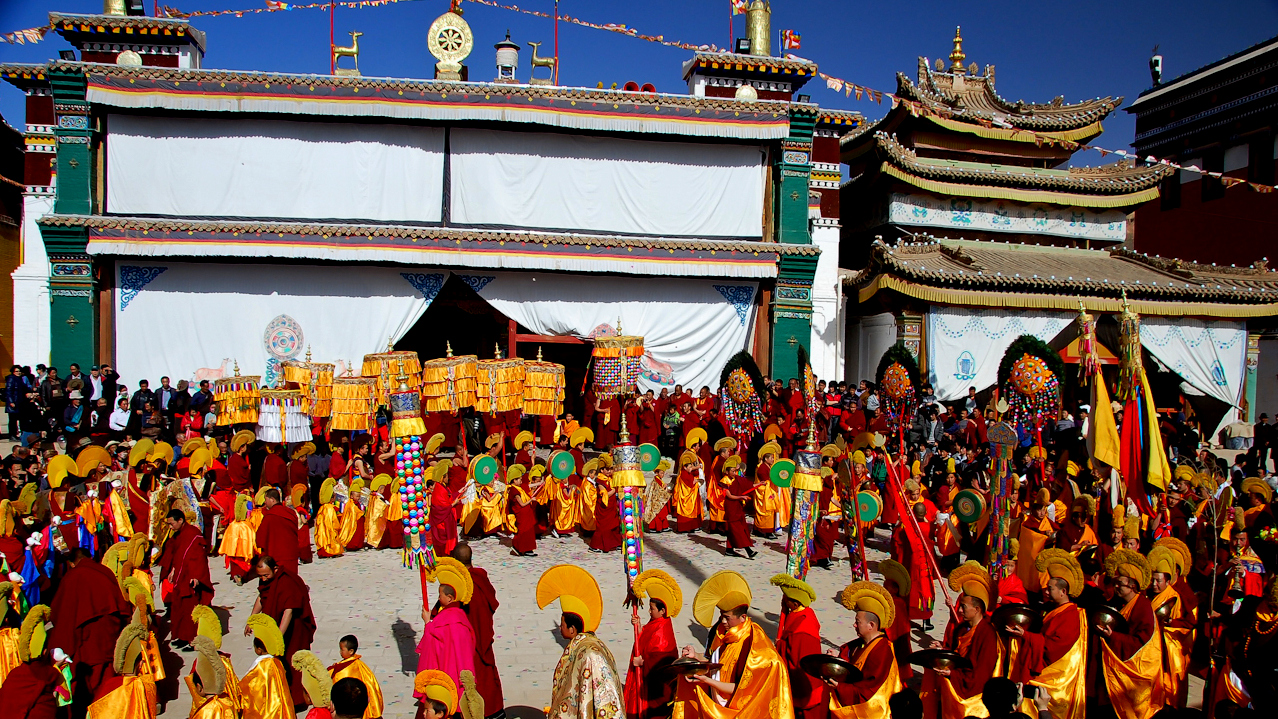
Historical Background: The Monlam Prayer Festival was initiated by Tsongkhapa in the early 15th century, shortly after he founded the Ganden Monastery. Its primary purpose was to pray for the long life of all the holy Gurus of all traditions, for the survival and spreading of the Buddha's teachings in the minds of all sentient beings, and for world peace. The festival quickly became a major event in Lhasa, the capital of Tibet, and spread to other areas.
Significance and Practices
The festival is a profound expression of spiritual devotion, aimed at promoting moral values such as benevolence, altruism, and virtue. During Monlam, Tibetan Buddhists make extensive use of prayers and rituals to invoke blessings for the benefit of all beings and the teachings of the Buddha.
-
Prayer and Rituals: Monks from the three major monasteries of Tibet – Ganden, Sera, and Drepung – as well as from other smaller monasteries, gather to participate in chanting prayers and performing ritualistic ceremonies. These prayers are believed to have immense power, especially when recited collectively.
-
Debates on Buddhist Philosophy: The festival is also known for its philosophical debates, a tradition that allows monks to sharpen their understanding and interpretation of Buddhist teachings. These debates are a critical aspect of their monastic education, showcasing the intellectual rigor of Tibetan Buddhism.
-
Butter Lamp Festival: The Monlam Prayer Festival concludes with the Butter Lamp Festival (Chunga Choepa), where thousands of butter lamps are lit in temples and public places, symbolizing the enlightenment of Buddha and the dispelling of darkness.
-
Giant Thangka Display: Another highlight is the display of giant thangkas (religious paintings) at monasteries, a tradition that allows devotees to receive blessings by viewing these sacred images.
Cultural and Social Impact: The Monlam Prayer Festival is not only a religious observance but also a cultural event that strengthens community ties and reaffirms the Tibetan identity. It brings together monks, nuns, and laypeople in a shared space of devotion and celebration. The festival also attracts pilgrims and tourists from around the world, offering them a glimpse into the spiritual and cultural life of the Tibetan people.
Modern Observances: While the Monlam Prayer Festival has its roots in Tibet, it is now celebrated in various parts of the world where Tibetan Buddhist communities have established monasteries and centers. Despite changes and adaptations over time, the core spirit of Monlam – fostering spiritual growth, peace, and harmony – continues to thrive, keeping the rich heritage of Tibetan Buddhism alive across generations and geographies.
Shoton Festival (Yogurt Festival)
The Shoton Festival, also known as the Yogurt Festival, is one of the most joyous and colorful events in the Tibetan calendar, celebrated with great enthusiasm in Lhasa and other parts of Tibet. Originally a monastic event, the Shoton Festival has evolved into a significant cultural celebration that marks the end of the monks' Yarne, their annual summer retreat, and has become a showcase for Tibetan opera, art, and cuisine.
Origins and Significance: The Shoton Festival has its origins in the 16th century when it was customary for local people to offer yogurt to monks who had completed their summer retreat. The retreat was a period during which monks stayed within their monasteries to avoid stepping on insects and thereby killing them, which is against Buddhist principles. At the end of this period, the monks would leave their monasteries, and the local populace would celebrate their return by offering yogurt, hence the name "Shoton," meaning "Yogurt Banquet."
Celebrations and Practices
The festival begins with the dramatic unfurling of a giant thangka of Buddha at Drepung Monastery, attracting thousands of pilgrims and visitors early in the morning to witness this sacred and awe-inspiring event. This is followed by days of festivities, which include:
-
Tibetan Opera Performances: The Norbulingka, the Dalai Lama's former summer palace, becomes the center stage for Tibetan opera (Lhamo) performances. Groups from different regions perform traditional operas, which are a blend of singing, dancing, and acting, telling ancient Buddhist stories and folklore.
-
Picnicking and Social Gatherings: Families and friends gather in parks and green spaces around Lhasa, especially in the Norbulingka gardens, for picnics and socializing. The atmosphere is festive, with people enjoying traditional foods, music, and games.
-
Exhibition of Tibetan Culture: The Shoton Festival serves as an exhibition of Tibetan culture, showcasing traditional arts, crafts, and costumes. It provides a glimpse into the rich cultural heritage of Tibet and its preservation.
Cultural Significance: The Shoton Festival not only celebrates the end of the monks' retreat but also marks the beginning of the harvest season. It is a time for the Tibetan people to express their faith, partake in cultural traditions, and enjoy the bounty of nature. Over the years, the festival has grown to become one of the most significant and anticipated events in Tibet, reflecting the vibrant spirit and cultural identity of the Tibetan people.
Modern Observances: Today, the Shoton Festival attracts visitors from around the world, offering them a unique opportunity to experience Tibetan culture, spirituality, and community life. Despite modern influences, the festival retains its traditional charm and religious significance, continuing to be a vital link to Tibet's past and a celebration of its enduring heritage.
Shoton Festival is a vibrant celebration of Tibetan religious traditions, culture, and community spirit. It is a testament to the resilience and vibrancy of Tibetan culture, offering a window into the rich tapestry of Tibet's spiritual and communal life.
Bathing Festival
The Bathing Festival, known as "Gamariji" in Tibetan, is a unique and traditional event celebrated in Tibet, reflecting the deep interconnection between Tibetan culture and the natural world. This festival takes place in the seventh month of the Tibetan lunar calendar, which usually falls around August or September, and lasts for about a week. The highlight of the festival occurs when the planet Venus appears in the sky, signaling the start of the bathing period.
Historical and Cultural Significance: The origins of the Bathing Festival are deeply rooted in Tibetan folklore and Buddhist traditions. It is believed that during this time, the water in Tibet became pure, blessed, and endowed with healing properties. According to legend, bathing in the water during this period can wash away sins, bring health, and prolong life. The festival is also linked to the story of Buddha's mother, who is said to have taken a bath in a sacred pond after giving birth to Buddha, making the act of bathing a symbolic purification ritual.
Practices and Observances
During the Bathing Festival, Tibetans from all walks of life head to rivers, lakes, and hot springs to bathe in the open air. Families and friends gather along the water bodies, setting up tents and campsites for the week-long festivities. The ritual bathing is usually done in the evening or at night, under the starry sky, adding a mystical aspect to the experience.
-
Health and Purification: The act of bathing is believed to have curative powers, aiding in the healing of ailments and promoting overall well-being. People immerse themselves in the water, sometimes accompanied by prayers and meditations, seeking spiritual cleansing as well as physical healing.
-
Community and Family Bonding: The festival is a time for community gatherings and family reunions. People share meals, stories, and laughter, strengthening social bonds and community ties. It's a time of joy and relaxation, away from the hustle and bustle of daily life.
-
Environmental Connection: The Bathing Festival highlights the Tibetan people's reverence for nature and their environment. By celebrating the purity and healing qualities of water, the festival fosters a sense of respect and responsibility towards natural resources.
Modern Observances: While maintaining its traditional essence, the Bathing Festival continues to be an important cultural event in Tibet. It attracts not only locals but also tourists curious to witness and participate in this unique cultural practice. The festival serves as a reminder of the rich cultural heritage of Tibet and the enduring connection between its people and the natural world.
The Bathing Festival stands as a testament to the Tibetan way of life, balancing spiritual traditions with communal joy and environmental consciousness. It's a vibrant expression of Tibetan culture, showcasing the deep spiritual and cultural ties that bind the Tibetan people to their environment.
Horse Racing and Archery Festivals
The Horse Racing and Archery Festivals are among the most vibrant and culturally significant events in Tibet, reflecting the region's deep-rooted nomadic traditions and love for outdoor sports. These festivals, typically held in the summer months, are not just about competition; they are grand celebrations of Tibetan culture, showcasing traditional sports, music, dance, and elaborate costumes.
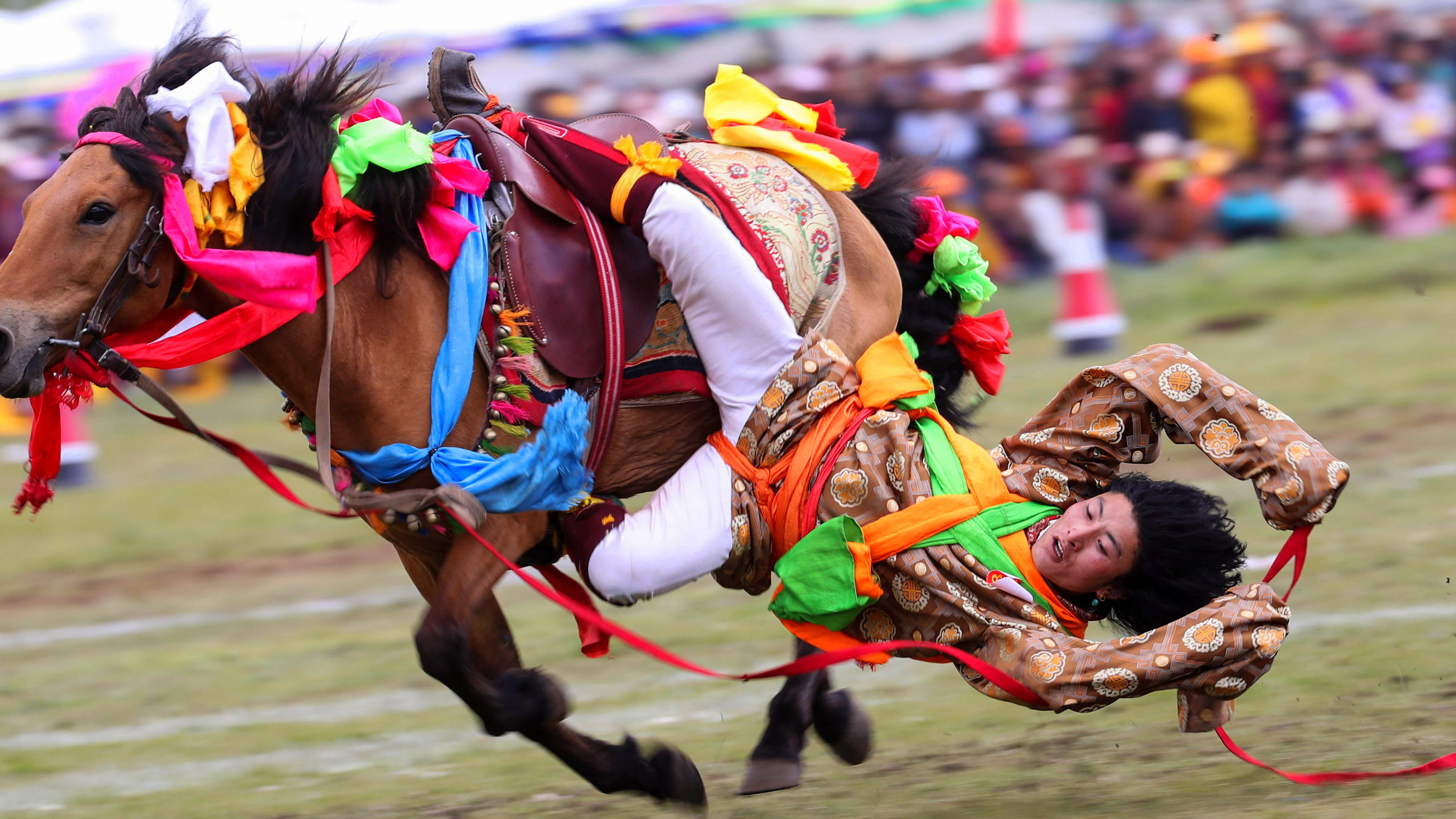
Horse Racing Festivals
Horse racing in Tibet goes beyond the mere spectacle of speed and agility. It is a testament to the enduring relationship between the Tibetan people and their horses, an essential part of nomadic life on the plateau. The festivals are held in various regions, with the most famous ones taking place in Litang and Nagqu. These events draw participants and spectators from across Tibet and neighboring areas, making them significant social gatherings.
- Cultural Displays: The festivals are marked by colorful displays of traditional Tibetan attire, with participants and horses adorned in beautifully crafted costumes and decorations.
- Communal Celebrations: Beyond the races, the festivals feature folk music, dance performances, and traditional Tibetan opera, creating a festive atmosphere that celebrates Tibetan identity and community spirit.
- Social Significance: These events serve as important social gatherings, providing an opportunity for families and friends to come together, share news, and strengthen community bonds.
Archery Festivals
Archery is another traditional sport deeply ingrained in Tibetan culture, with its origins traced back to ancient military practices. The archery festivals, like horse racing, are much more than competitions; they are celebrations of skill, tradition, and communal life.
- Skill and Competition: Competitors, often dressed in traditional attire, showcase their archery skills, aiming at targets placed at considerable distances. These contests are highly competitive and are a source of great pride for the participants and their families.
- Cultural and Spiritual Elements: The festivals are imbued with cultural and spiritual significance, featuring rituals and prayers for success and safety. The blessing of the bows and arrows, in particular, is a common ritual, highlighting the spiritual dimension of the sport.
- Community Engagement: Archery festivals are vibrant community events, featuring picnics, singing, dancing, and the sharing of traditional foods and drinks. They provide an important space for social interaction and the reinforcement of cultural traditions.
Modern Observances: While maintaining their traditional essence, horse racing and archery festivals have adapted to modern times, attracting not only locals but also international tourists fascinated by Tibet's rich cultural heritage. These events offer a unique window into the traditional Tibetan way of life, emphasizing the importance of community, tradition, and respect for nature.
In contemporary Tibet, these festivals continue to play a vital role in preserving and celebrating the unique cultural identity of the Tibetan people. They are a testament to the resilience and vibrancy of Tibetan traditions, offering a colorful and dynamic expression of the region's cultural heritage.
Butter Lamp Festival
The Butter Lamp Festival, known as "Chunga Choepa" in Tibetan, is a deeply symbolic and visually stunning event that marks the end of the Monlam Prayer Festival, culminating on the 15th day of the first month of the Tibetan lunar calendar. This festival is celebrated with great fervor throughout Tibet and in areas with Tibetan cultural influence. It usually falls in February or March according to the Gregorian calendar, coinciding with the full moon.

Significance: The Butter Lamp Festival is imbued with profound spiritual significance. It commemorates the victory of Lord Buddha in a debate against non-Buddhist scholars. The lighting of butter lamps is a traditional practice that symbolizes the Buddha's enlightenment, the dispelling of darkness, and the spreading of wisdom and compassion throughout the world. The festival is a time for Tibetans to honor Buddha's teachings and reflect on the principles of Buddhism.
Celebrations
-
Lighting of Butter Lamps: The highlight of the festival is the lighting of thousands of butter lamps in monasteries, temples, and public places. These lamps, made from clarified yak butter, are arranged in elaborate designs and illuminate the night, creating a mesmerizing sight that symbolizes the light of wisdom dispelling the darkness of ignorance.
-
Butter Sculptures: Artisans and monks create intricate sculptures from colored butter, depicting deities, animals, flowers, and religious symbols. These butter sculptures are displayed in temples and public squares, showcasing the artistic talent and spiritual devotion of the Tibetan people.
-
Prayers and Offerings: Devotees gather in temples to pray, chant, and make offerings. The atmosphere is one of reverence and celebration, with the collective prayers contributing to a sense of communal solidarity and spiritual upliftment.
-
Cultural Performances: The festival is also marked by traditional music, dance, and opera performances. These cultural expressions add to the festive atmosphere, celebrating Tibetan heritage and the joyous spirit of the occasion.
Cultural and Social Impact: The Butter Lamp Festival serves not only as a religious observance but also as a significant cultural and social event. It strengthens community bonds, reaffirms Tibetan Buddhist values, and preserves the rich traditions of Tibetan art and craftsmanship. The festival attracts both locals and tourists, offering them an opportunity to witness the beauty and depth of Tibetan spiritual and cultural practices.
Contemporary Observances: While deeply traditional, the Butter Lamp Festival continues to resonate with people of all ages. It plays a crucial role in the preservation of Tibetan culture, especially among communities in exile. The festival's emphasis on light and wisdom holds universal appeal, symbolizing hope, renewal, and the enduring human aspiration for enlightenment.
The Butter Lamp Festival is a vibrant testament to the richness of Tibetan Buddhism and culture, encapsulating themes of spiritual illumination, artistic expression, and communal harmony. It remains a vital part of Tibet's cultural calendar, celebrated with devotion and joy by Tibetans around the world.
Things to consider during the Festival Celebration in Tibet
Celebrating a festival in Tibet is an immersive experience that offers deep insight into the rich cultural and spiritual tapestry of the region. If you're planning to participate in a Tibetan festival, there are several important considerations to keep in mind to ensure a respectful, enjoyable, and enriching experience. Here are some key points to consider:
Respect Cultural Norms and Traditions
- Dress Appropriately: Tibetan festivals are often religious in nature. Wearing modest and respectful attire is important. Research or ask about specific dress codes if applicable.
- Behavior: Show respect during ceremonies and prayers. Follow the lead of locals, especially in terms of when to stand, sit, or participate in rituals.
Understand the Significance of the Festival
- Learn Before You Go: Gain a basic understanding of the festival's history, significance, and main events. This knowledge will enrich your experience and help you appreciate the celebrations more deeply.
- Respect Religious Sentiments: Many festivals have religious undertones. Even if you're a spectator, it's crucial to respect the religious sentiments and practices of the participants.
Be Mindful of Photography Etiquette
- Ask Permission: Always ask for permission before taking photos of people or private ceremonies. Some areas or rituals may be off-limits for photography.
- Cultural Sensitivity: Be aware that flashing cameras can be intrusive or disrespectful in certain settings, especially during religious ceremonies.
Environmental Considerations
- Minimize Your Footprint: Be mindful of your environmental impact. Dispose of waste properly and follow local guidelines for preserving the natural and cultural environment.
- Sustainable Practices: Support local businesses and engage in sustainable practices that contribute positively to the community.
Health and Safety
- Altitude Sickness: Many festivals in Tibet are held at high altitudes. Acclimatize properly to avoid altitude sickness, and be aware of your physical limits.
- Stay Hydrated and Protected: The high altitude can also lead to dehydration and sunburn more quickly than you might expect. Drink plenty of water and use sun protection.
Community Engagement
- Participate with Respect: If visitors are welcome to participate, do so with respect and enthusiasm. Engaging with locals can enhance your experience and foster mutual understanding.
- Language and Communication: Learning a few phrases in Tibetan can go a long way in showing respect and enhancing your interactions with locals.
Legal and Ethical Considerations
- Permits and Permissions: Depending on your destination, you may need permits to visit certain areas, especially in Tibet. Ensure you have all the necessary documentation.
- Support Local Economy: Purchasing local crafts, foods, and services helps support the local economy. Be mindful of where your money goes, and try to contribute positively to the community's economic well-being.
Flexibility and Openness
- Expect the Unexpected: Festivals can be times of flux, with schedules changing and unexpected events. Approach your visit with flexibility and openness to fully embrace the experience.
By keeping these considerations in mind, you can have a meaningful and respectful experience during your festival celebration in Tibet, contributing positively to the local culture and environment while enriching your understanding of this unique region.
Participating in a Tibetan festival is a profoundly enriching experience that offers a unique glimpse into the vibrant cultural and spiritual life of the region. By respecting local customs, understanding the significance of the festivities, and engaging with the community in a mindful manner, visitors can fully immerse themselves in the rich tapestry of Tibetan traditions. These celebrations are not just about the spectacle; they are a deep dive into the heart of Tibetan identity, showcasing the resilience, spirituality, and communal harmony of its people. As you navigate these festivals with respect, openness, and curiosity, you not only enrich your understanding of the world but also contribute positively to the preservation and appreciation of Tibet's extraordinary cultural heritage.
FAQs of the Tibetan Festivals: A Window into the Region's Vibrant Cultural
Q. What are the most famous Tibetan festivals?
A. The most famous Tibetan festivals include Losar (Tibetan New Year), Saga Dawa Festival (marking the birth, enlightenment, and nirvana of Buddha), Monlam Prayer Festival (Great Prayer Festival), Shoton Festival (Yogurt Festival), the Bathing Festival, and various Horse Racing and Archery Festivals, along with the Butter Lamp Festival. Each festival has its unique significance and set of traditions.
Q. When is the best time to visit Tibet for festivals?
A. The best time to visit Tibet for festival celebrations largely depends on which festival you wish to experience. Losar occurs in February or March, Saga Dawa is celebrated in May or June, and the Shoton Festival takes place in August. Check the lunar calendar for exact dates as many Tibetan festivals are based on it.
Q. How can tourists participate in Tibetan festivals?
A. Tourists are often welcome to observe and sometimes participate in Tibetan festivals. Participation should always be respectful and mindful of local customs and religious practices. It’s advisable to follow the lead of locals and ask for permission before engaging in any activities, especially those that are religious in nature.
Q. What should I wear to a Tibetan festival?
A. Modest and respectful attire is recommended for attending Tibetan festivals, especially those with religious ceremonies. Bright colors are generally acceptable, but it's important to dress conservatively to show respect for local customs.
Q. Are there any restrictions for photography during Tibetan festivals?
A. Yes, there may be restrictions on photography, especially during religious ceremonies or within monasteries. Always ask for permission before taking photos, and be aware of signs indicating photography is not allowed.
Q. Can foreigners easily access all Tibetan festivals?
A. While many festivals are open to foreigners, some areas in Tibet require special permits for visitors. Additionally, access to certain monasteries or religious ceremonies might be restricted. It’s best to research and possibly arrange your visit through a reputable tour operator who can provide guidance on permits and access.
Q. How do Tibetan festivals reflect the culture of the region?
A. Tibetan festivals are deeply rooted in Buddhism and reflect the spiritual, historical, and social aspects of Tibetan life. They showcase traditional music, dance, art, and sports, serving as a living expression of Tibet's cultural heritage and religious devotion.
Q. What is the significance of the Butter Lamp Festival?
A. The Butter Lamp Festival symbolizes the victory of light over darkness and wisdom over ignorance, commemorating the Buddha's enlightenment. Thousands of butter lamps are lit, creating a spectacular display of light, and intricate butter sculptures are exhibited.
Q. How can I respect local customs while attending a festival in Tibet?
A. Show respect by dressing modestly, behaving appropriately during ceremonies, asking permission before taking photographs, and participating only when invited or allowed. Learning a few phrases in Tibetan and showing interest in local traditions can also express respect and appreciation for Tibetan culture.
Q. What should I keep in mind regarding health and safety during festival times?
A. Be mindful of the high altitude in Tibet, which can cause altitude sickness. Stay hydrated, protect yourself from the sun, and give yourself time to acclimatize before engaging in festival activities. Also, be aware of large crowds and keep personal belongings secure.


